A walk through Cold War Berlin, learning about how architecture was used for political statements. Our second walk with Context Travel, after our awesome Walking the Berlin Wall tour a few months ago.
That place looked familiar. I had already been there. The wide boulevard, lined by three rows of streetlights, with traffic rushing back and forth. The imposing apartment buildings, rising high, making passer-bys crane their necks. The somber decoration, geometric tiles and a few friezes.
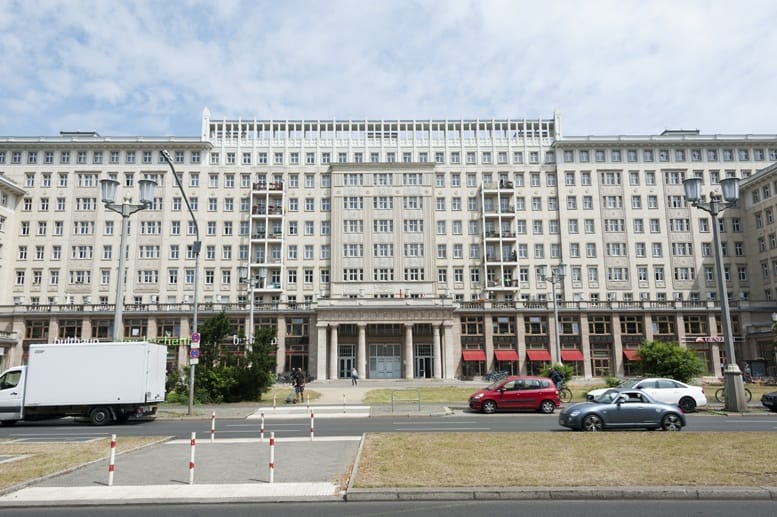
That place gave me a weird feeling. It was indeed scenic – even beautiful in some way. But it was cold. Not a place you’d want to call home. It looked like something built by a higher power, to justify its authority, and to remind people that such authority is not to be questioned. Those tiles, those friezes, those streetlight-lined avenues – it was as if they wanted to say ‘you may be here now, but soon you may not be’. I half expected to see the moustached face of 1984’s Big Brother surveying everything from above.
Berlin in the Cold War
We were in Berlin’s Karl-Marx Allee. True, I had never been there before, but I had been in Warsaw’s Marszałkowska Street, Sofia’s Largo, and others. Every city that used to lie beyond the Iron Curtain has their very own Karl-Marx Allee; a showcase street, theatre of military parades and way into the city for visiting dignitaries, at the time of the Eastern Bloc.

It was a cold morning, emphasising the feeling of inadequacy I felt in front of that imposing perfection. We were there to take the Divided City, Berlin in the Cold War tour run by Context Travel, a company organising cultural tours run by academics. The theme of our tour was Cold War architecture, and our guide Else was PhD student in history of architecture, born in East Berlin.
The tour began with an overview of the post-war situation in Berlin, and the events that led to the separation between East and West Berlin. It’s a topic that fascinates me, because Berlin was still a divided city during my childhood. The city was bombed to the ground, especially the central strip, extending eastwards from Tiergarten. The expansive park was easy to recognize from above, and so everything around it was destroyed.
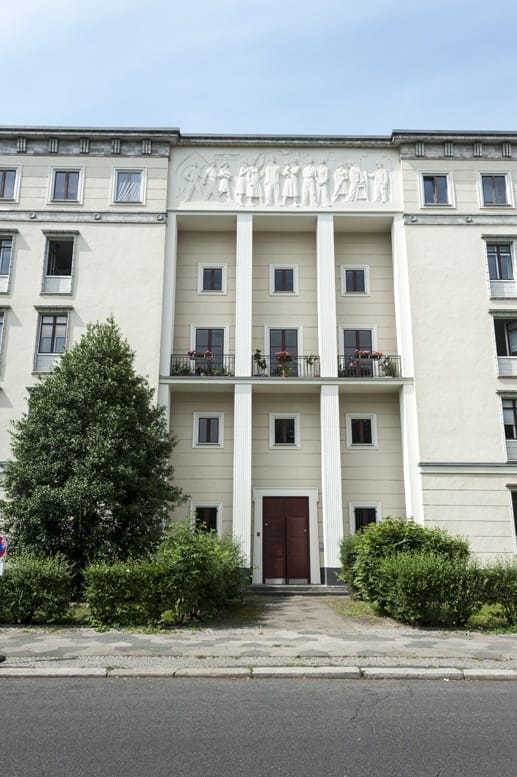
When the city was divided between Soviet and Western powers in 1945, the priority was the same for both: reconstruction. This time, however, rebuilding didn’t just mean picking up the pieces and creating new houses, streets and shops. It meant creating a new identity through architecture.
East Berlin: Karl-Marx Allee
Karl-Marx Allee was in the Soviet side of town, the main thoroughfare coming from the east. Before the war, this was a working-class area, and most people lived in so-called ‘rental barracks’, typical early 20th century tenements, overcrowded and unhygienic. The East German regime wanted to turn this street in a showcase avenue, to impress the convoys of visiting heads of state driving through on their way to the capital, and celebrate the triumph of the working classes. To do so, the easiest example to follow was the one closest to them: the Mitte, Berlin’s Baroque historic centre, most of which had been bombed to the ground.
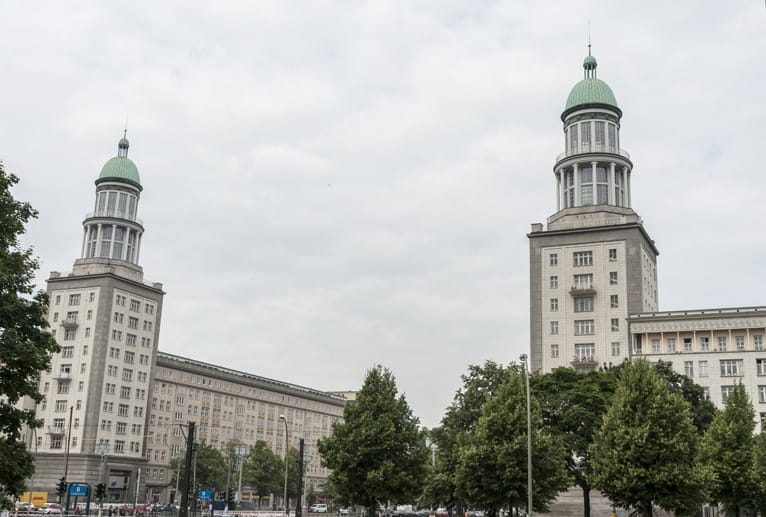
Reconstruction took place in the early 1950s. The resulting architecture was called ‘democratic by content and national by form’; grandiose and baroque, inspired by the palaces of yesteryear, but functional and practical, as the main aim was to build new homes for East German citizens. The street was named Stalin Allee; the name was changed to Karl-Marx Allee only in 1961, when the communist world finally learnt of the horrors of Stalinism.
The imposing apartment buildings were called ‘Arbeiterpaläste’, ‘workers palaces’, and were equipped with state of the art facilities, from lifts to central heating and parquet floors. I assumed they would be the houses of party cadres, but in fact apartments were assigned by means of a lottery, prioritising the families of those who had helped build the project. In a world that was (in theory) without class distinctions, everyone lived together; workers and academics, party leaders and toilet sweepers, the former rich and the former poor.
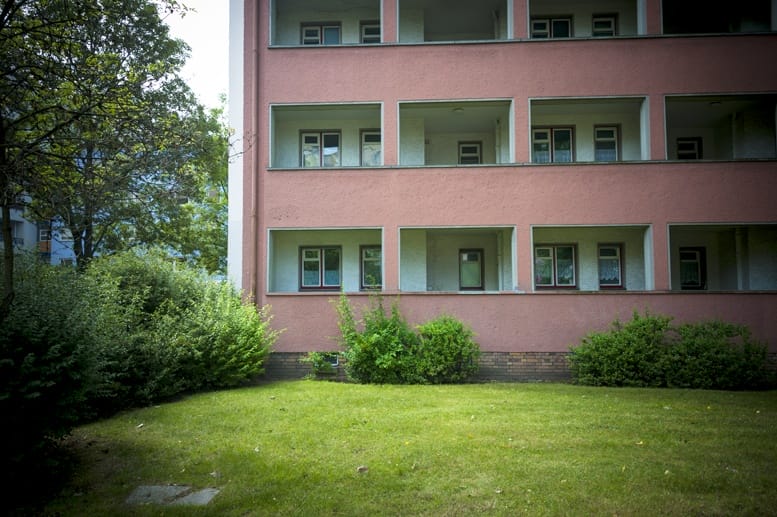
Features of Karl-Marx Allee
Façades over Karl-Marx Allee are all covered in tiles, and we all wondered why. Else explained that at the time, East Germany had little heavy industry left, as almost all machinery had been brought to the Soviet Union as compensation for war damages.
Construction with concrete and steel, the most common style in postwar times, was out of the question; and so the ‘workers palaces’ were built with bricks manufactured on site. The Meissen ceramic plants were left untouched by the Soviets, so a series of decorative tiles was commissioned to brighten up the façades over Karl-Marx Allee.

‘If only walls could talk’, we often say. Well, if these walls could indeed talk, I’m sure they’d have some good stories to tell. Tales of communal life, of manufactured happiness and latent terror, tales of microphones in the walls and of living in terror of those knocks on the door. ‘Listen to the city’, I thought. And this is what I heard, between the gleaming façades of Karl-Marx Allee. I heard a grey life, a plaintive melody of surrender, and I felt the presence of someone, or something, overlooking from above.
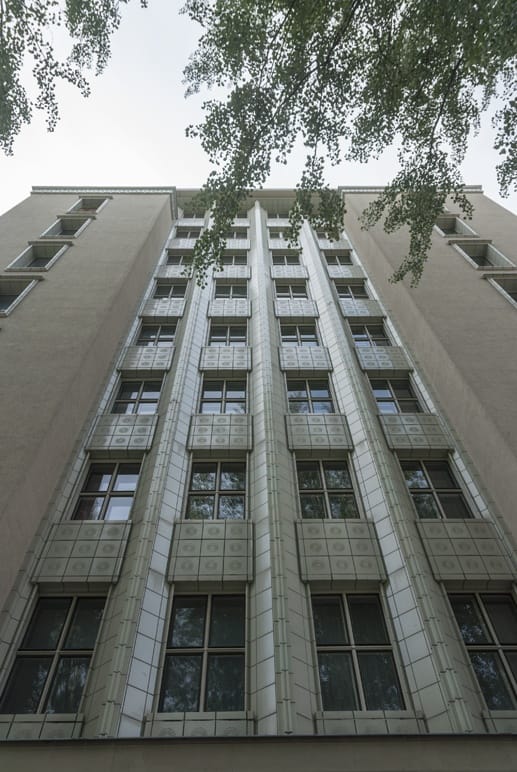
The paradox of ‘Ostalgia’
Perhaps that’s because I was born in the West, and that is what I was taught about East Germany. In March, we had taken another Context Travel tour, this time about the Berlin Wall. Our guide told us that some former East German citizens miss the GDR, a time when you felt taken care of, when the overlooking, omniscient presence of Big Brother was in fact perceived like a caring mother.
I asked Else about this feeling. She called it ‘Ostalgia’, nostalgia for the East. It can take various forms; some collect East German memorabilia, others open themed bars and restaurants, others merely feel a longing for Communist times. Else said that besides former inhabitants of the GDR feeling nostalgic about East Germany, many of those people feeling ‘Ostalgia’ never actually lived in the GDR. Or they wouldn’t miss it, she said.
West Berlin: Hansaviertel
We left Karl-Marx Allee and took the S-Bahn to Hansaviertel, on the northwest corner of Tiergarten. Across the Divided City, from East to West Berlin. If Karl-Marx Allee was East Germany’s architectural statement, Hansaviertel was West Germany’s architectural response.

Tiergarten used to be an upper class area, totally destroyed during the war. The West German government was faced with the same issue as their Eastern cousins, reconstruction. But while the East was busy with Karl-Marx Allee, the West watched. Let’s not forget that in the Fifties free passage between the two halves of the city was still possible; the wall didn’t come up until 1961. In 1957, the West German government organized Interbau, a housing development project to rebuild Hansaviertel, and turn it into a showcase capitalist neighbourhood.
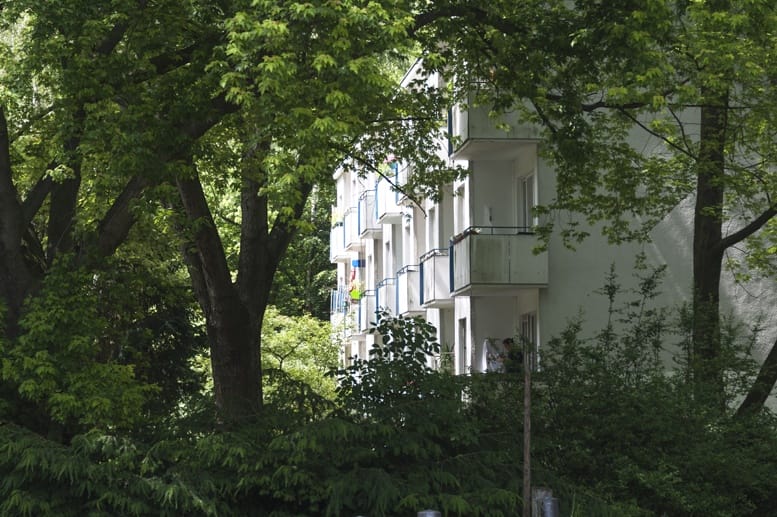
The architects invited were one third international, including prestigious names like Alvar Aalto, Oscar Niemeyer and Walter Gropius, one third from West Germany and one third from West Berlin, to show the creativity of the ultra-capitalist city to the world. Every architect was assigned one building, and told to build what they wanted. There was a plan for the district, but no plan for the individual buildings. Hansaviertel is a testament to freedom of mind and freedom of creativity; a message of democracy, of ‘everything is possible’, the Western values at the time.
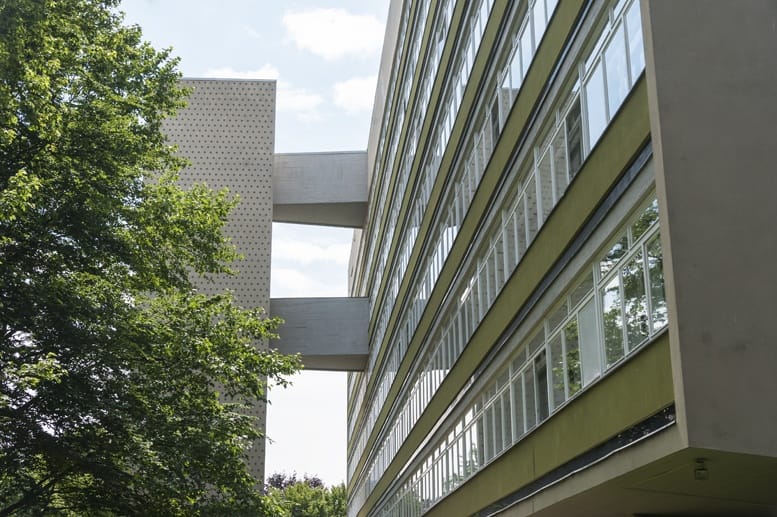
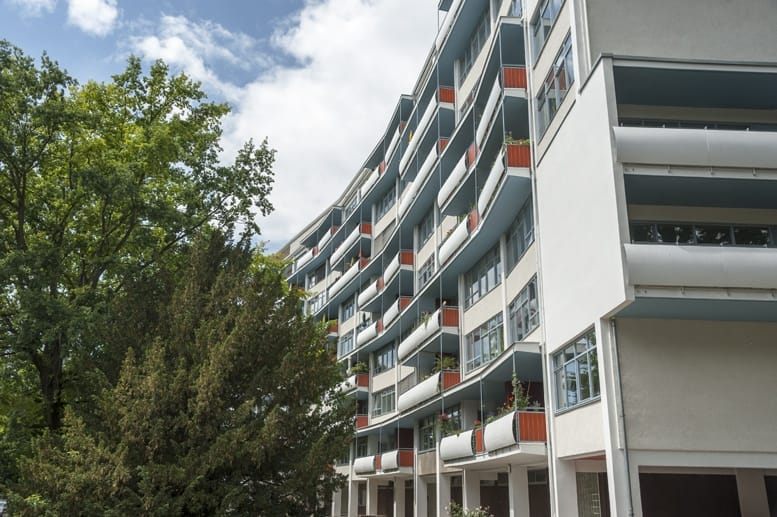
Hansaviertel was planned according to the 1920 theories of decentralized cities – living quarters here, shopping there, schools and workplaces over there, spread out and surrounded by nature. It is clear that Hansaviertel is a show city; four high-rise buildings, much higher than the highest buildings in Karl-Marx Allee and colorfully painted, were built right next to the tracks of the East German-run S-Bahn. When the district was presented to the public, visitors could survey Hansaviertel from above on a chairlift, and marvel at the ‘modern neighborhood’ that had nothing to envy to America.
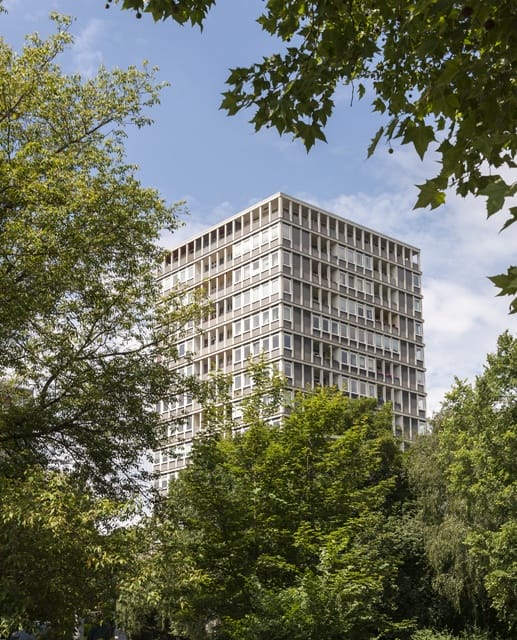
On a summer afternoon, walking around Hansaviertel is a peaceful and pleasant experience. The result of total freedom is a heterogeneous neighbourhood. High-rises lie next to Le Corbusier’s-like apartment blocks, across the road from single-family houses.
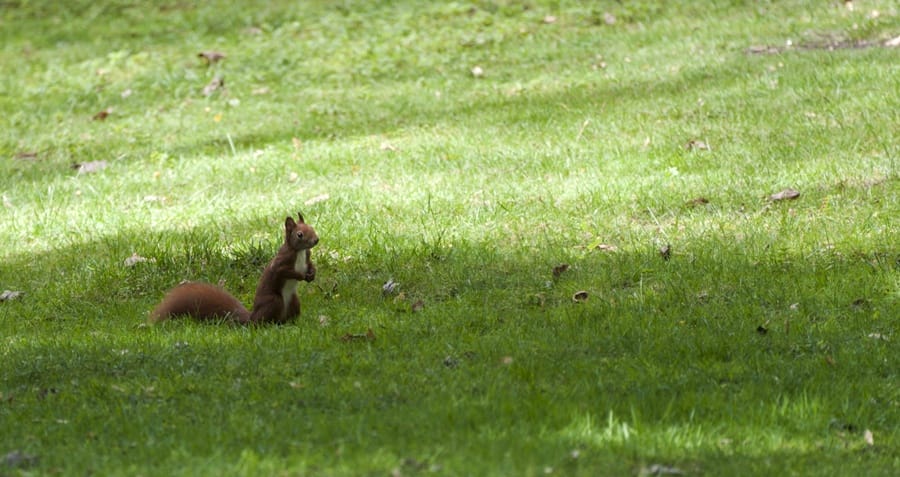
Unlike Karl-Marx Allee where everyone lived together and common spaces abounded, Hansaviertel is built by the individual, for the individual. The richest families could own their own piece of land, with their own little house with a garden, surrounded by walls to guarantee privacy.
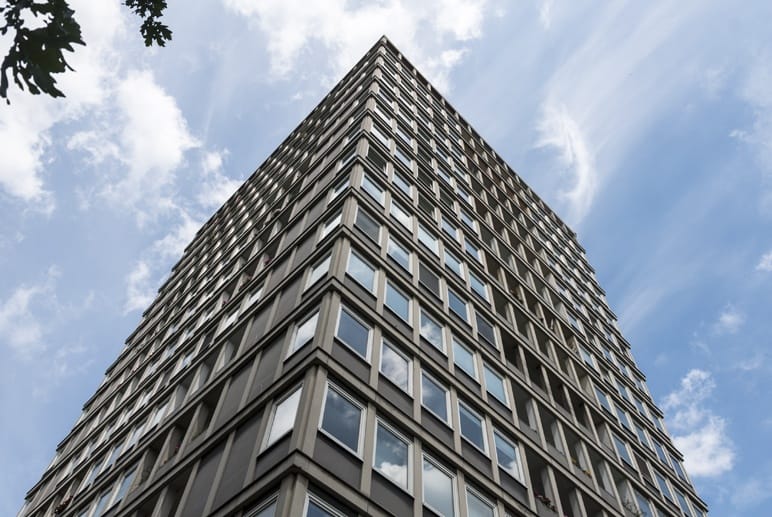
Hansaviertel was built by the West Berlin municipality, and was intended to be sold off to privates. However, the high prices fetched by such an ambitious project were way too high for the still-crippled postwar economy and many apartments remained unsold, and have now been rented by the same family for generations at affordable prices. The ultra-capitalist dream of Hansaviertel was doomed to fail, or at least not to be fulfilled in all its intended potential, just like capitalism itself, perhaps.

Some places are not just places. They’re part of the cultural geography of a place, and become repository of dreams, hopes and losses. One can simply walk through, or choose to stop and listen to the voices of those who lived there before. In Karl-Marx Allee, we felt the strings of the puppeteer. In Hansaviertel, we felt the energy and hope of what is now a broken dream. Listen to the city, and you’ll uncover her soul.

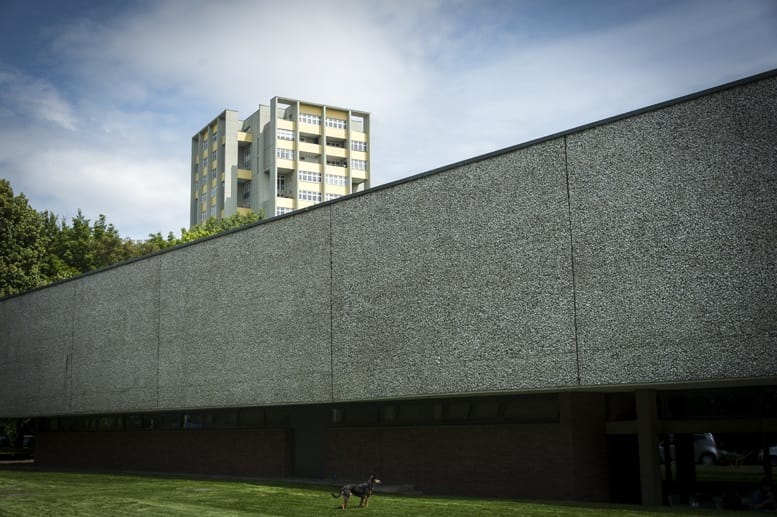
We were guests of Context Travel during this tour. All opinions are our own – we loved the tour and highly recommend it.

Great article! Best city in the world!
True story Patrick! thanks 🙂